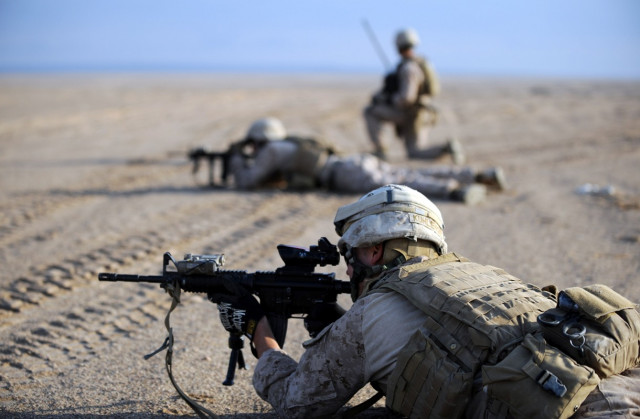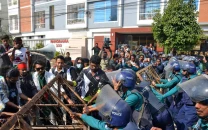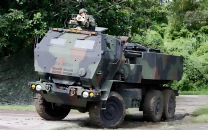In Afghan war, US struggles with insidious insider threat
US defense officials confirm Nato troops ordered to adopt strict new security precautions to counter insidious threat.

With Afghan soldiers opening fire on their Nato comrades with alarming frequency, US defense officials on Thursday confirmed that Nato troops had been ordered to adopt strict new security precautions to counter the insidious threat.
The stepped up security underlines the dilemma facing the American-led force that has portrayed its alliance with Afghan troops as a cornerstone of the war effort.
“The danger with these things is the degree to which they undermine trust between the two countries,” said Carter Malkasian, who worked as a civilian adviser alongside American troops in Afghanistan and Iraq.
“It kind of creates a spiral. Some of our members are killed, some of our advisers are killed. And in turn we take efforts to protect ourselves and distance ourselves.”
“But by distancing ourselves, the Afghans start to distrust us more because they can sense that we don't trust them,” he said.
With 17 coalition troops killed in insider attacks so far this year, US officers acknowledge the so-called green-on-blue attacks require weighing security concerns with the need to cultivate ties with Afghan security forces.
“It's a delicate balance that has to be constantly tweaked. You can't throttle forward or back too much,” military spokesman Captain John Kirby told AFP. “We have to be out and about with Afghans.”
Reflecting a growing threat, the commander of Nato and US troops, General John Allen, issued orders in recent weeks calling for some advisers to carry weapons and for Nato units to designate one team member as a “guardian angel,” who remains armed and on alert for possible fratricidal attacks, officials said.
For coalition troops working at Afghan government or military buildings, the orders require them to move desks to make sure their backs are not turned to the door.
After two US advisers were gunned down last month inside the Afghan interior ministry, Nato officers were withdrawn from government ministries.
Most of the advisers have yet to return to the ministry buildings and now carry out their work by email and phone.
But Kirby and other officers insist the Nato partnership with Afghans is not in jeopardy and that commanders are determined for coalition troops to stay engaged with their counterparts.
Afghan officials are taking steps to improve physical security at government offices and to vet possible infiltrators or recruits prone to extremism, Allen said in Washington on Monday.
The Pentagon has offered varying explanations of the insider attacks, describing them as “isolated” events, a natural part of counter-insurgency warfare and the result of “self-radicalized” Afghans as well as Taliban infiltration.
An internal Pentagon report by an academic last year called the problem “systemic” and blamed much of the violence on a deep cultural divide between the two sides.
Two British soldiers were shot on Monday in Lashkar Gah in Helmand province by an Afghan army officer who had no known ties to the Taliban and five years of experience.
He was sent to the Lashkar Gah base to collect a commander, “but apparently the Nato soldiers did not open the gate for them, he got angry and shot them,” said General Sayed Maluk of the Afghan army's 215 corps.
Allen said US forces had faced similar fratricidal threats in Iraq and Vietnam, but some analysts disagree.
“It's not something that happens in every counter-insurgency fight. But it has been one that has afflicted countries fighting in Afghanistan,” said Malkasian, now at the US Army War College's Strategic Studies Institute.
More than a hundred years ago, British troops in Afghanistan faced mutinies or were shot by their nominal allies in tribal militias, he said.
During his time in Helmand province working with US Marines, Malkasian said scuffles between the two sides were common, with Afghans sensitive to perceived insults to their honor.
“There were times we all had to sit down and have a painful conversation together to rebuild trust,” he said, adding that friction never rose to a lethal level.
Malkasian said he believed coalition forces would manage to keep the problem under control but some former officers warned the political fallout could be far worse, particularly in the United States where public support for the war has plunged.
“The real issue is you can't sustain casualties coming from your friends,” said a retired senior officer who served in Afghanistan, who spoke on condition of anonymity.
Americans are ready to accept that troops will be killed fighting Taliban insurgents, he said, but “they’re not at all supportive of having those casualties come from the people that we’re working with.”



















COMMENTS
Comments are moderated and generally will be posted if they are on-topic and not abusive.
For more information, please see our Comments FAQ